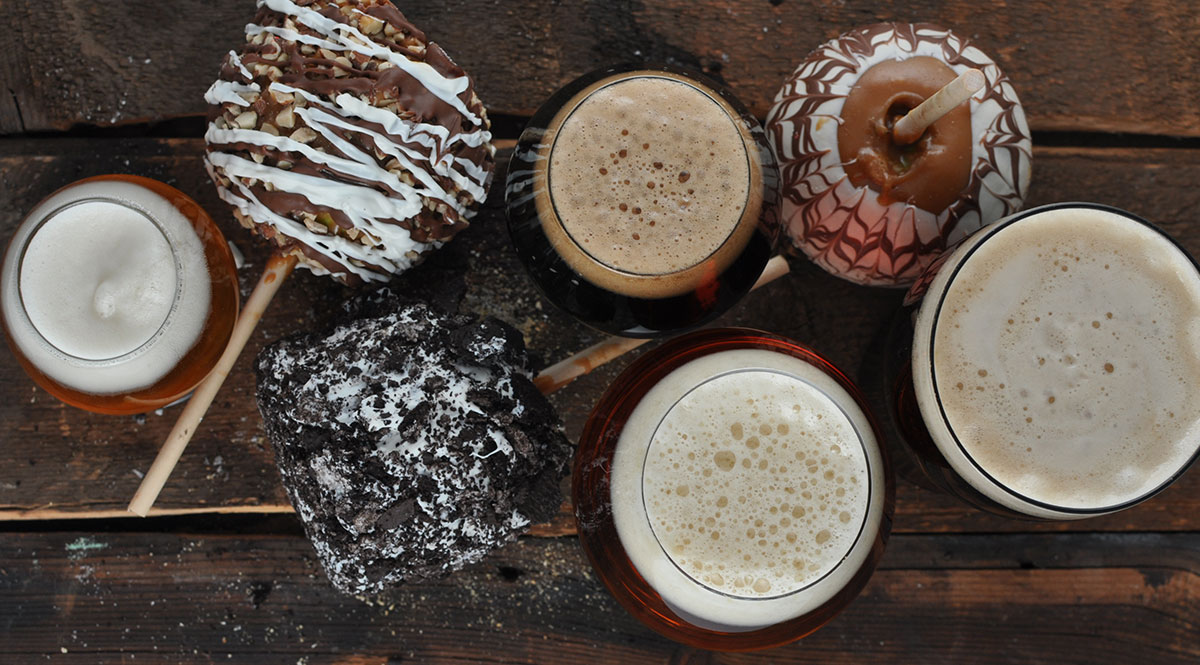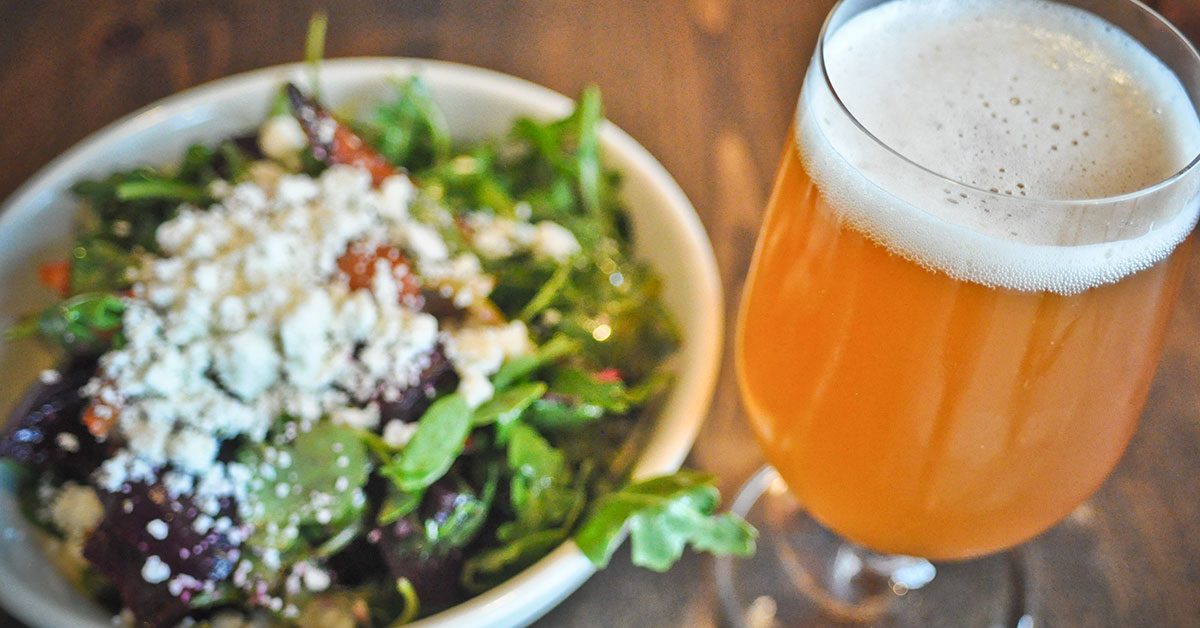The beer may be great, and the dish may be great, but when you take a bite of the food and then a sip of the beer, something just doesn’t add up. This should work, you say. The beer is tasting great: crisp, clean notes, and the hops are popping right where you want them. The dish looks amazing; it is exactly what you wanted to have right now. Yet with that first sip, the hops disappear, the beer tastes sweeter, and the carbonation seems lower. What just happened?
As brewers experiment with more and more beer styles, the old adage of matching lighter styles with lighter dishes is evolving. The next challenge is to match flavors according to where they will hit the palate. A lighter style such as Kölsch can cleanse fat when paired with acid; a big barley wine can work with raw apple. Intensely hoppy beers can be paired with a dish that holds the hops back so you can taste the malt.
Pairings are diving deeper as we go beyond the simple concept of matching light to light and heavy to heavy. As we explore this further, here are some common culinary components and how they can change your palate’s perception during a food and beer pairing.
Fats
Think of fats as a blanket for your tongue. Fats lay down a base layer of protection that blocks off the first few seconds of anything the palate comes into contact with next. This can work to your advantage in the case of beers with higher ABV, intense hops, or barrel aging, easing the palate into the stronger flavors from the beer.
Be cautious with lighter beer styles. For easy reference, the lighter the style, the more balanced the fat should be. Consider using vegetable-based oils such as olive oil or grapeseed oil in place of butter in food served with lighter beers. Butter and richer animal fats can stifle hops to the point you can no longer taste them in lighter styles. With the recent trend in tropical notes in hops as well, butter and richer fats can change those intriguing papaya, melon, grapefruit, and citrus notes into pithy, hostile, and harsh flavors. Conversely, if you are trying to pair foods with a beer that has intense notes of roast, smoke, barrel aging, or alcohol heat, a heavier hand with the fat can help your palate find the more delicate notes in the beer.

Sugars
An important property of sugar is that it can intensify tastes and aromas. A small amount of sugar added to a dish can amplify the sour or bitter notes from beer on your palate. It can also enhance the savory taste of vegetables and meats without making them sweet. The reverse is also true with sugar—a bitter or salty style of beer will lower the perceived sweetness on the palate from a sugary dish. One example that illustrates this well is the classic pairing of carrot cake and IPA. The sugar in the cake makes the carrots taste sweeter and enhances the hops, while the bitterness of the IPA tones down the sweetness of the cake on the palate.
Vinegars/Acids
Vinegar is used in many culinary applications from pickling and vinaigrettes to finishing sauces and marinades. Vinegars and acids are great palate cleansers and work well to concentrate the palate on the flavors in beer. Take, for example, pairing pickled vegetables with a hoppy beer. The acid from the vinegar occupies the sides and roof of the mouth, while the hops are settled on the tongue. Using acids and vinegars to finish dishes can also lighten their impact on the palate, making way for more complex notes to emerge from the beer.
With a rich duck confit, a simple finishing with a touch of apple cider vinegar will break the fat off the palate faster and make way for the flavors of the beer to emerge. Be careful with higher ABV beers and intensely hop-forward beers as vinegar acts to dry out the tongue, intensifying the initial impact of alcohol dryness and hop bitterness on the palate.
Chefs take all of these elements into consideration when creating pairings, but the best piece of advice may be that if a pairing works for you, go with it. Don’t miss your own pairing moment trying to change something for the sake of change or searching for something you don’t taste. Happy pairings to all.
This article was originally published in the November/December issue of The New Brewer.
CraftBeer.com is fully dedicated to small and independent U.S. breweries. We are published by the Brewers Association, the not-for-profit trade group dedicated to promoting and protecting America’s small and independent craft brewers. Stories and opinions shared on CraftBeer.com do not imply endorsement by or positions taken by the Brewers Association or its members.


Share Post